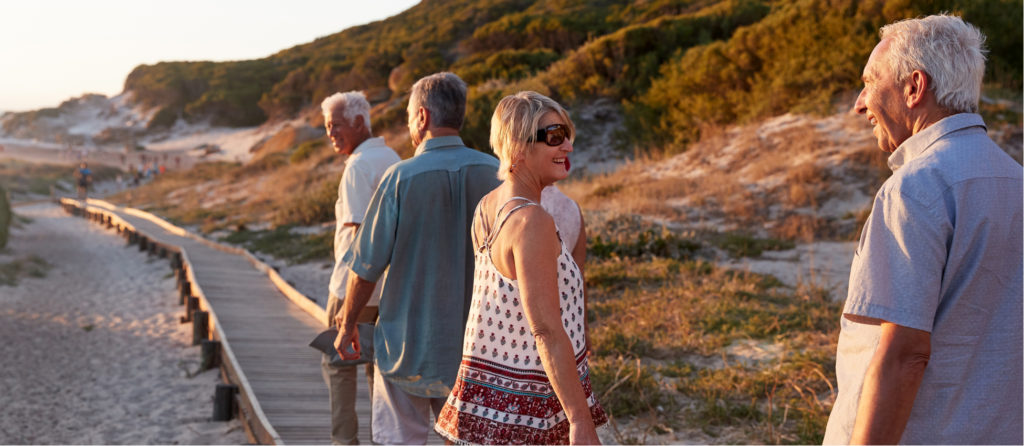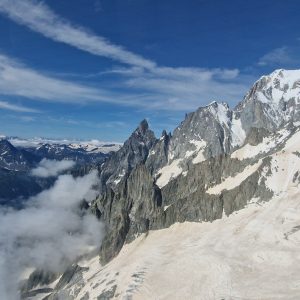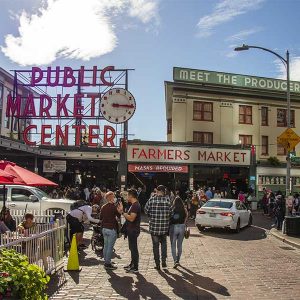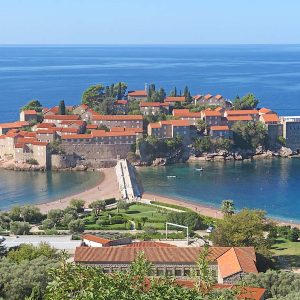My last Battlefield Tour with Holts Tours to date looked at the British World War II Desert Campaign from 1940 to 1942. This tour had been running for many years, but was always restricted to the fighting in Egypt because of the political situation in Libya. What made my Tour in 2008 so interesting was that for the first time in many years, and as it proved only for a very brief interval, it was possible for western tourists to visit Libya, then still under the rule of Colonel Muammar Gaddafi.
 The tour began by our flying into Tripoli, and then moved by coach to Benghazi, stopping at El Agheila where the 8th Army under General O’Connor cut off the Italians in 1940, and Rommel launched his 1942 Campaign, driving the British out of Libya. At Benghazi we saw Rommel’s HQ at the time of the famous ‘Raid on Rommel’, and the grave of Colonel Geoffrey Keyes, who died leading the Raid.
The tour began by our flying into Tripoli, and then moved by coach to Benghazi, stopping at El Agheila where the 8th Army under General O’Connor cut off the Italians in 1940, and Rommel launched his 1942 Campaign, driving the British out of Libya. At Benghazi we saw Rommel’s HQ at the time of the famous ‘Raid on Rommel’, and the grave of Colonel Geoffrey Keyes, who died leading the Raid.
We then drove through Cyrenaica to Tobruk, stopping to see the sights of the ancient city of Cyrene. At Tobruk we followed the two sieges of Tobruk, and visited the scenes of some of the most intense fighting at Acroma, Bir Hakeim, ‘Knightsbridge’ and Sidi Rezegh. We had the dubious pleasure of driving through a sand storm, one of our party discovered an unexploded World War II mortar bomb (which we hastily moved away from), and we saw a live scorpion.
We then drove via Sollum into Egypt to stop overnight at Sidi Barrini. On the way we saw the entrance to the famous ‘Hellfire’ (Halfaya) Pass, but unfortunately the Egyptian army were conducting manoeuvres in the area, so we could not drive through it.
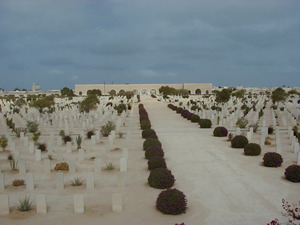 From there we moved via Mersa Matruh to El Alamein, to study the sights of the battles in that area, including the famous ‘Snipe’ action at Kidney Ridge (although only an army officer could describe this as a ‘ridge’). Finally we drove to Cairo via Alexandria, passing (but unfortunately not stopping at) the Pyramids of Giza, saw a few of the sights of Cairo, and then flew back to London.
From there we moved via Mersa Matruh to El Alamein, to study the sights of the battles in that area, including the famous ‘Snipe’ action at Kidney Ridge (although only an army officer could describe this as a ‘ridge’). Finally we drove to Cairo via Alexandria, passing (but unfortunately not stopping at) the Pyramids of Giza, saw a few of the sights of Cairo, and then flew back to London.
Contrary to many people’s expectations, much of the Libyan and Egyptian desert is stony rather than sandy, and in consequence makes quite good going for military vehicles, although there are sandy patches to catch out the unwary. Guides are essential because of the large amount of unexploded WWII munitions which remain in the desert. We travelled on part of a new road which led to an oil production area in Libya, which was lined on one side by hundreds of recovered anti-tank and anti-personnel mines!
Apart from the military history, what made this tour particularly interesting was the contrast between Libya and Egypt, which I would summarise as follows:
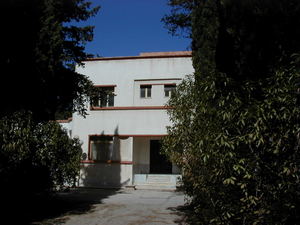 Prosperity – Egypt was obviously much more prosperous than Libya. In Libya we toured the desert in old Japanese pick-up trucks, which lacked air-conditioning; whilst this was no doubt closer to the WWII experience, in the intense desert heat I preferred the modern air-conditioned Range Rovers we used in Egypt.
Prosperity – Egypt was obviously much more prosperous than Libya. In Libya we toured the desert in old Japanese pick-up trucks, which lacked air-conditioning; whilst this was no doubt closer to the WWII experience, in the intense desert heat I preferred the modern air-conditioned Range Rovers we used in Egypt.
Advertisements – all the shops in Egypt were covered with adverts, which were largely missing in Libya. Instead, Libya had countless national flags, and posters praising Colonel Gaddafi and his political party; the equivalents were virtually absent in Egypt.
Street salesmen – the bane of Egypt is the numberless street salesman who pester tourists to buy things wherever they go; these were completely absent in Libya.
Alcohol – both Libya and Egypt are Islamic countries, where the inhabitants are forbidden to consume alcohol. However, whilst Libya was completely ‘dry’, Egypt accommodated western tourists’ tastes by allowing them to consume alcohol discretely in hotels and tourist restricted areas. I am not an alcoholic, but the first long, cool, lager in Egypt, after a hot day and an enforced week ‘on the wagon’ in Libya, is one of my fondest memories of the tour.
Security –  in Egypt we were accompanied by security guards whenever we ventured into the desert. Whilst relatively unobtrusive, occasionally their coats would fall open to reveal automatics or small sub-machine guns; not the most reassuring of sights. There was nothing like this in Libya, and I never felt threatened in any way in that country.
in Egypt we were accompanied by security guards whenever we ventured into the desert. Whilst relatively unobtrusive, occasionally their coats would fall open to reveal automatics or small sub-machine guns; not the most reassuring of sights. There was nothing like this in Libya, and I never felt threatened in any way in that country.
Overall a fascinating tour, but not an area of the world I personally would choose to visit again, because I did not like hot, intense sun (let alone the current political problems). For anyone visiting this area be warned that because of the sun it is often almost impossible to see the view screen on a digital camera, and hence to know what your photograph will turn out to be! I was lucky in that my old digital camera has a built-in view-finder; a camera with this feature is almost a must.
